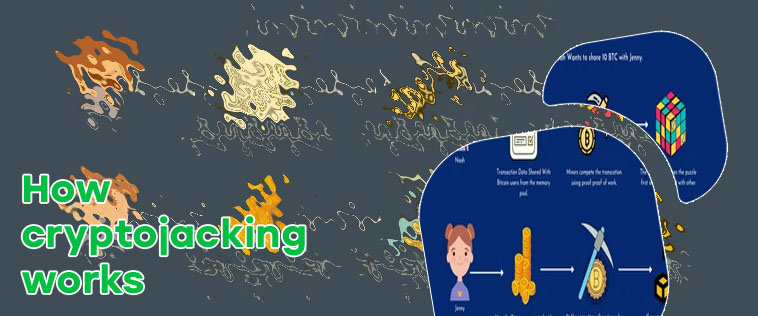How does bitcoin mining work
Understanding Bitcoin Mining: A Comprehensive Guide The concept of bitcoin mining can be quite complex for beginners to grasp. However, with the right resources, it can be broken down into simpler terms. The following two articles delve into the intricacies of how bitcoin mining works, providing valuable insights and explanations to help demystify the process.
Bitcoin mining is a complex process that involves solving cryptographic puzzles to validate transactions on the blockchain network. To better understand how this process works, it is important to delve into the technical aspects of mining, including the role of miners, the equipment used, and the rewards involved. The following articles will provide valuable insights into the world of bitcoin mining and help demystify this intriguing process.
The Role of Miners in Bitcoin Mining: An In-Depth Look

Today, we have the pleasure of speaking with a seasoned miner in the world of Bitcoin mining. Let's hear firsthand about the role of miners in this intricate process.
Miner: "Mining Bitcoin involves solving complex mathematical puzzles to validate transactions on the blockchain. Miners play a crucial role in securing the network and ensuring the integrity of the decentralized system."
Interviewer: "What are some of the challenges miners face in this competitive field?"
Miner: "One of the biggest challenges is the increasing difficulty level of mining, which requires powerful hardware and high electricity consumption. Miners also have to stay updated with the latest technology to remain competitive."
Interviewer: "How do miners contribute to the overall success of Bitcoin mining?"
Miner: "Miners validate transactions and add them to the blockchain, which is essential for the functioning of the entire network. They also receive rewards in the form of newly minted Bitcoins and transaction fees."
In conclusion, this insightful interview sheds light on the integral role miners play in the world of Bitcoin mining. Understanding the challenges and contributions of miners is crucial for anyone interested in the topic of cryptocurrency mining.
Understanding the Cryptographic Puzzles in Bitcoin Mining
Cryptographic puzzles play a crucial role in the process of Bitcoin mining, a key aspect of the cryptocurrency system. These puzzles are essentially complex mathematical problems that miners must solve in order to validate transactions and create new blocks on the blockchain. Understanding how these puzzles work is essential for anyone looking to delve into the world of Bitcoin mining.
In Bitcoin mining, miners compete with each other to solve these puzzles using their computational power. The first miner to solve the puzzle is rewarded with newly minted bitcoins and transaction fees. This process not only secures the network but also ensures the integrity of the transactions.
The puzzles themselves are based on cryptographic hash functions, which are algorithms that take an input and produce a fixed-size string of characters. Miners must find a hash that meets certain criteria, which is a computationally intensive task requiring significant processing power.
By grasping the intricacies of these cryptographic puzzles, miners can optimize their mining operations and increase their chances of successfully mining bitcoins. Additionally, understanding the role of cryptographic puzzles can provide valuable insights into the security and efficiency of the Bitcoin network as a whole.
In conclusion, a solid understanding of cryptographic puzzles in Bitcoin mining is essential for anyone looking to navigate the world of cryptocurrency. By mastering these puzzles, miners can enhance their mining capabilities and contribute to
The Evolution of Mining Equipment in the Bitcoin Industry
I recently had the opportunity to speak with a mining equipment expert about the advancements in technology within the Bitcoin industry. According to the expert, the evolution of mining equipment in this industry has been nothing short of revolutionary.
One of the key advancements in mining equipment has been the development of more efficient hardware. Manufacturers have been continuously innovating to create machines that can process transactions faster and more effectively. This has led to a significant increase in mining speed and profitability for miners around the world.
Another important development has been the shift towards more environmentally friendly mining equipment. With concerns about the carbon footprint of Bitcoin mining on the rise, manufacturers have been working to create equipment that is more energy-efficient and sustainable. This not only benefits the environment but also helps miners reduce their operating costs.
Overall, the evolution of mining equipment in the Bitcoin industry has been crucial for the continued success and growth of the industry. As technology continues to advance, we can expect to see even more improvements in mining equipment that will further streamline the mining process and make it more accessible for miners worldwide. This article is important for anyone interested in staying updated on the latest developments in Bitcoin mining technology.
Exploring the Economics of Bitcoin Mining: Costs and Rewards
Bitcoin mining is a process that involves the validation of transactions on the Bitcoin network using powerful computers. Miners compete to solve complex mathematical puzzles in order to add new blocks to the blockchain and receive rewards in the form of newly minted bitcoins. This process requires a significant amount of computational power, electricity, and resources, leading to the emergence of large-scale mining operations in various parts of the world.
The economics of Bitcoin mining are multifaceted, with costs and rewards playing a crucial role in determining the profitability of mining operations. The costs associated with mining include hardware expenses, electricity costs, cooling systems, maintenance, and operational expenses. These costs can vary significantly depending on factors such as the price of electricity, the efficiency of mining equipment, and the scale of the operation.
On the other hand, the rewards of Bitcoin mining come in the form of block rewards and transaction fees. The block reward is halved approximately every four years, leading to a gradual reduction in the number of new bitcoins being created. This scarcity is designed to mimic the scarcity of precious metals like gold and increase the value of existing bitcoins over time.
Many countries around the world have become hotspots for Bitcoin mining, with China, the United States, Russia, and Kazakhstan being among the top mining destinations. These countries

